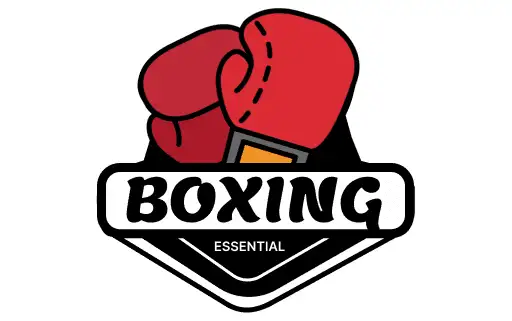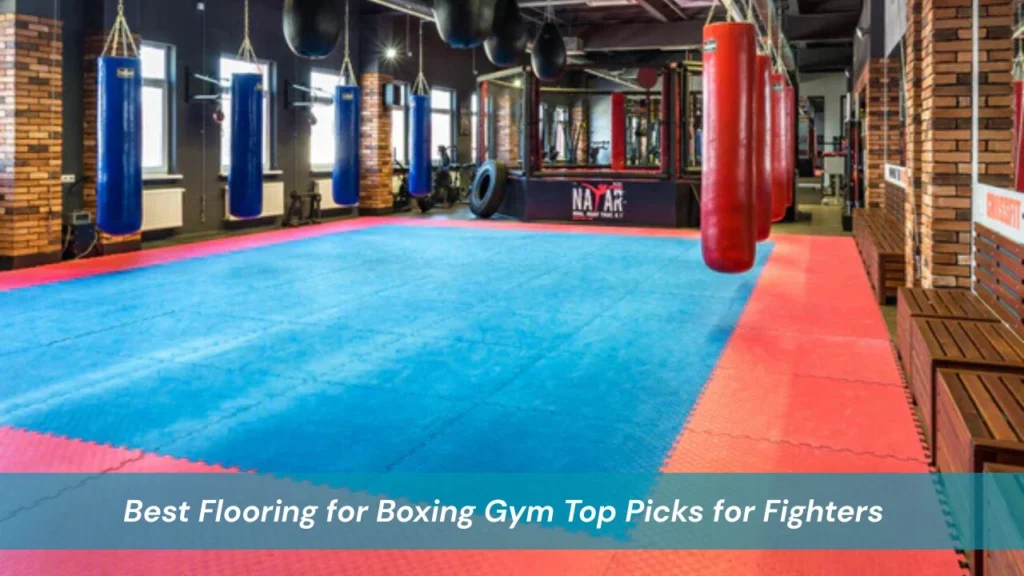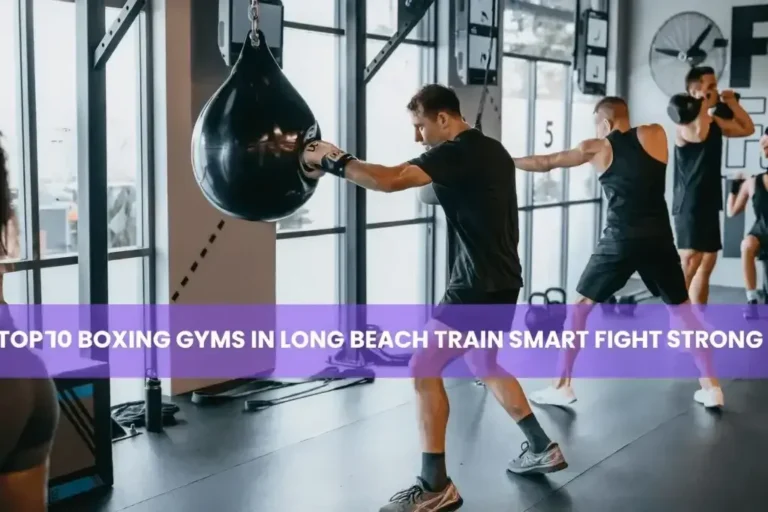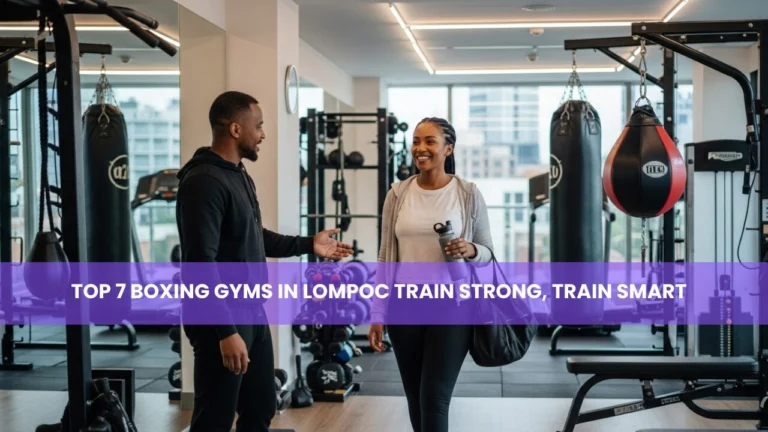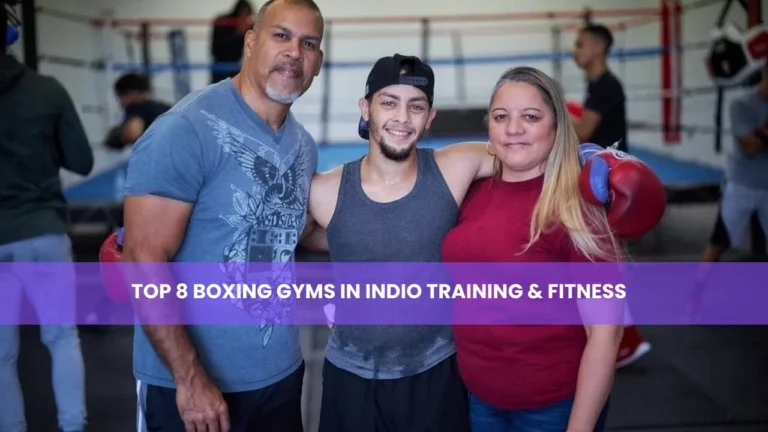Designing or upgrading a boxing gym involves more than just punching bags and gloves; the flooring plays a critical role in safety, performance, and long-term durability. Choosing the best flooring for boxing gym can prevent injuries, improve grip, and create the right environment for intense training sessions. Whether you run a professional boxing gym, a home setup, or a hybrid combat sports facility, the right flooring makes all the difference.
In this guide, we’ll cover the top flooring options, what factors to consider, and expert recommendations to help you make an informed choice.
Key Takeaways
- Proper flooring in boxing gyms enhances safety, performance, and joint protection.
- Rubber, foam, vinyl, and carpet-bonded foam are top options, each suited for different gym zones.
- Flooring choice should consider shock absorption, traction, durability, maintenance, and cost.
- Mixing flooring types across zones creates a balanced, safe, and effective training environment.
Why Flooring Matters in a Boxing Gym
Boxing is a high-impact sport that involves footwork, agility, and explosive movements. Unlike traditional gyms, where flooring only supports weights and machines, a boxing gym needs a surface that can absorb shock from jumps, falls, and strikes. It should prevent slips and trips during fast-paced footwork, protect joints such as knees, hips, and ankles, withstand equipment like heavy bags and speed bags, and offer durability under heavy daily foot traffic. Simply put, the right flooring ensures safety, comfort, and performance for athletes.
Factors to Consider When Choosing Boxing Gym Flooring
When selecting flooring for a boxing gym, it is important to think beyond appearance and consider performance. Shock absorption is a major factor since it reduces strain on joints and minimizes the risk of injury. Traction is equally important, as it provides the right balance of grip for boxing shoes without being overly sticky. Durability should not be overlooked because flooring must handle years of use under heavy equipment and training intensity. Maintenance also plays a role, with the best flooring being resistant to sweat, dirt, and bacteria. Another factor is noise reduction, since many gyms want to minimize echoes and impact sounds. Finally, cost and ease of installation will determine whether a gym owner can manage the flooring upgrade themselves or requires professional help.
Best Flooring Options for Boxing Gyms
1. Rubber Flooring (Rolls or Tiles)
Rubber flooring remains one of the most popular and reliable choices for boxing gyms. It provides excellent durability and shock absorption, making it suitable for high-intensity training and daily use. Rubber flooring is resilient enough to withstand heavy bags, dropped weights, and constant footwork. It also provides slip resistance even when sweat builds up, making it safer for athletes. Rubber’s durability ensures it lasts for years without losing its protective qualities. However, the upfront cost is higher than other flooring types, and installation can be heavy or time-consuming. Despite this, rubber flooring is a top recommendation for professional boxing gyms and high-traffic facilities.
2. Foam Mats (Puzzle or Interlocking Mats)
Foam mats are widely used in martial arts and smaller gyms because of their affordability and comfort. They are lightweight, soft underfoot, and provide cushioning for movements. Installation is simple since most foam mats come in interlocking puzzle-style pieces that can be laid down without adhesives. However, foam mats wear out more quickly under heavy equipment, making them less suitable for areas with heavy bags. They also compress over time and may need replacing sooner than rubber. Foam mats are best suited for home boxing gyms, light training spaces, or warm-up areas where comfort is more important than durability.
3. Vinyl Sports Flooring
Vinyl flooring is a versatile choice commonly seen in multi-purpose sports facilities. It provides a smooth surface with decent shock absorption and is resistant to moisture, sweat, and spills. Gym owners often choose vinyl for its professional appearance and ease of cleaning. While vinyl has many benefits, it offers less cushioning compared to foam or rubber, and it can be slippery if the surface lacks texture. For boxing gyms that double as fitness or training studios, vinyl is an excellent option, though it may not provide enough impact protection for purely boxing-focused facilities.
4. Carpet-Bonded Foam
Carpet-bonded foam is a flooring material commonly used in wrestling, cheerleading, and MMA gyms. It combines foam padding with a carpeted surface, making it comfortable and safe for ground-based training. For boxing gyms, this flooring is especially useful in grappling zones or stretching areas. It provides traction and softness, reducing the risk of injuries during falls. However, carpet-bonded foam is harder to clean than vinyl or rubber and may absorb sweat and odors over time. It is not the best option for heavy bag zones, but it works well in mixed martial arts and warm-up areas inside a boxing gym.
5. Concrete with Mats
Some gym owners rely on concrete floors as the base and add portable mats in training zones. This is the most budget-friendly setup and allows flexibility since mats can be moved around as needed. The downside is that concrete provides minimal shock absorption and can be harsh on joints during long training sessions. For home gyms or temporary setups, this approach can work, but it is not ideal for a professional facility.
Flooring for Different Boxing Gym Areas
Not all areas of a boxing gym require the same flooring. The boxing ring itself usually has foam padding with a canvas cover to protect fighters during sparring. Strength training zones are best suited for rubber flooring, which can handle dropped weights and heavy equipment. Cardio and conditioning areas benefit from rubber rolls or vinyl surfaces that are easy to clean after high-intensity workouts. Finally, warm-up and stretching areas often use foam mats for comfort and support. By mixing flooring types across different zones, gym owners can create a balanced training environment that enhances performance and safety.
Installation and Maintenance Tips
Installing boxing gym flooring depends on the material chosen. Interlocking tiles are the easiest option for DIY installation, especially for home gyms. Rubber rolls, on the other hand, may require adhesive or professional installation to ensure long-lasting performance. Maintenance is equally important. Gym owners should clean mats daily with a disinfectant to prevent the buildup of bacteria and odors. Choosing moisture-resistant flooring is also critical to avoid damage from sweat and spills. By following these practices, flooring can last longer while maintaining a safe training environment.
Real-World Example Pro Boxing Gym Setup
A practical example of flooring selection is Mayweather Boxing + Fitness. This chain of gyms uses rubber flooring throughout most training areas because of its durability and impact absorption. For the boxing rings and stretching zones, they combine specialized foam mats to increase comfort and safety. This hybrid approach shows how mixing flooring types based on specific zones ensures athletes receive the best performance while protecting their joints and preventing injuries.
FAQs
What is the best flooring for a home boxing gym?
For home gyms, foam interlocking mats are often the best choice. They are affordable, easy to install, and provide enough cushioning for general boxing training without requiring professional setup.
Can I use regular gym flooring for boxing?
While regular gym flooring can be used, boxing requires more shock absorption and traction compared to traditional weightlifting or cardio areas. Rubber or foam mats specifically designed for combat sports will provide better safety and performance.
How thick should boxing gym flooring be?
Most boxing gyms benefit from flooring that is between 8mm and 20mm thick. Thicker flooring provides better shock absorption, which is especially important for sparring, conditioning, and equipment-heavy zones.
Is rubber flooring worth the cost?
Yes. Although rubber flooring has a higher initial cost, it is one of the most durable and long-lasting options available. It provides excellent impact protection, slip resistance, and noise reduction, making it a worthwhile investment for professional gyms.
How do I clean boxing gym floors?
The best method is to use a mild disinfectant or gym floor cleaner daily. This prevents bacteria, odors, and moisture buildup, which are common issues in high-traffic boxing gyms.
Conclusion
The best flooring for a boxing gym depends on your specific training needs, space, and budget. Professional gyms should prioritize rubber flooring because of its durability and superior shock absorption. Home gyms can benefit from foam mats due to their affordability and easy installation. Multipurpose facilities might find vinyl or carpet-bonded foam useful, while hybrid gyms often combine different flooring types across various zones.
Investing in the right flooring ensures safety, comfort, and long-term performance. By carefully considering factors such as shock absorption, durability, traction, and maintenance, gym owners can create an environment where athletes perform at their best without unnecessary risk. Visit Boxing Essential to explore more.
